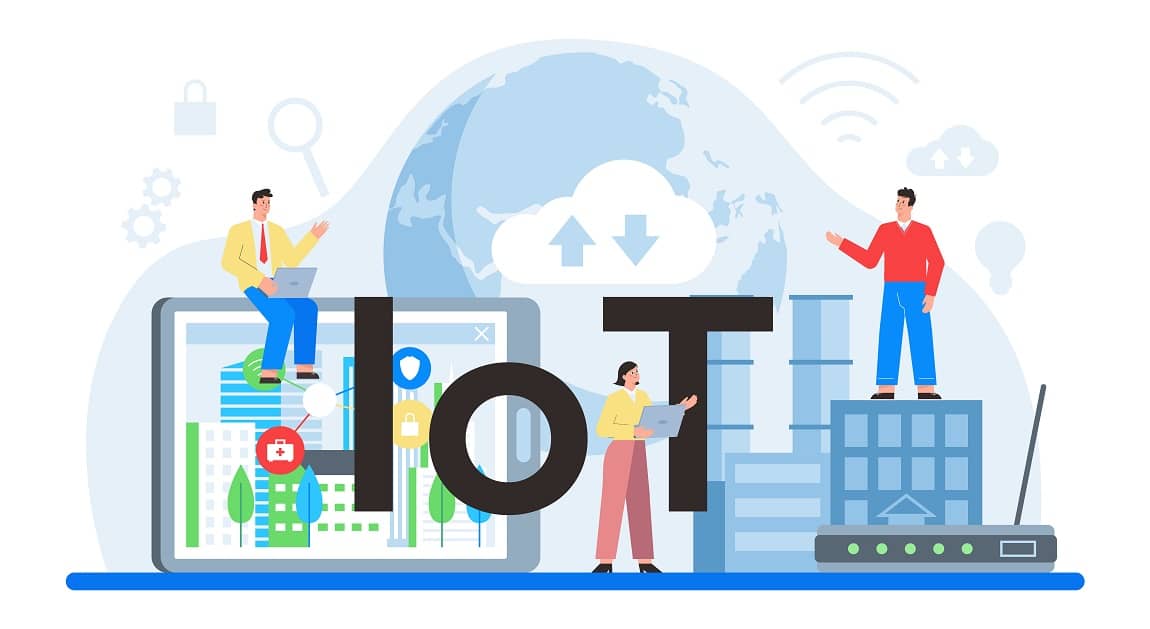The Internet of Things (IoT) is a type of technology that enables the transferring of data between devices (“Things”) and the Internet. An IoT Gateway is an essential component, working as a central hub for IoT that bridges the gap between devices and the cloud. This allows for seamless connectivity and data transferring even on older, legacy devices.
What is an Industrial IoT Gateway?
An Industrial IoT (IIoT) gateway is a specific type of IoT made for an industrial setting. For example, you can use an IIoT on an industrial shop floor to connect devices and sensors with the site’s enterprise software. It works by collecting data from those devices, processing it, and transmitting it to the systems for storage or further data processing.
All of this is done on-site. Due to this, an IIoT requires specialized, robust hardware that can survive harsh environments such as shock, vibration, and intense temperature swings. That way, system failures are avoided, and the tech can run through just about anything.
With an IIoT gateway, industrial sites can combine their modern smart systems with legacy devices, allowing them to implement Industry 4.0 seamlessly. It’s a way of modernizing industries without replacing all the older machines.
Key Features and Functionalities of an IIoT Gateway
Here is precisely what an IIoT gateway can offer an industrial setting:
Connectivity
An IIoT gateway primarily gets used for its ability to connect devices and senses to the internet/the cloud via communication interfaces. Often, this works by using Ethernet, Wi-Fi, Cellular, and Bluetooth.
Data Collection
When an IIoT gateway is connected to an industrial device, it can collect data such as sensor readings, production metrics, and equipment status.
Local Processing
Industrial sites can use edge computing to process and analyze data locally, allowing for real-time data analysis. That makes it faster and more secure. Of course, local processing is one of the big reasons why robust IIoT gateway hardware is necessary.
Protocol Translation
Protocol translation allows different kinds of devices in an industrial setting to communicate with one another. It means even the most diverse devices can be a part of the IIoT ecosystem. Often, industries invest in various devices over the years, and this seamless integration means none of those have to get left behind.
Security
An IIoT gateway often has built-in security features, including firewalls, authentication mechanisms, and encryption. These features secure all the data sent to the cloud, thus preventing unauthorized access and data breaches.
Edge Analytics
Specific types of IoT gateways enable edge analytics, which means you can run machine learning models on-site. This provides real-time, insightful data analysis, resulting in fast, smart solutions. Plus, there’s no need to send data over a vulnerable network with edge analytics, making it more secure.
What Legacy Devices Can be Connected to an IIoT Gateway?
One of the handiest parts of an IIoT gateway is that you can connect even legacy devices to it. Using items like converters and adaptors, an IIoT gateway can even show new capabilities of legacy devices. Here are some of the industrial devices you can connect:
Sensors and Actuators
You can use adaptors and retrofitting techniques to connect devices such as pressure sensors, motors, and temperature sensors to the IIoT. Then, you can control those sensors and actuators and receive data from them using an interface.
Industrial Equipment
Many types of on-site industrial machinery – such as generators and pumps – can be connected to the IIoT, usually by fitting them with sensors. This is very useful, as you can gain real-time data on even older industrial equipment. For example, it makes it easier to learn about energy consumption or when a piece of equipment needs maintenance.
HVAC Systems
HVAC systems are crucial in an industrial environment as they control heating, ventilation, and air conditioning. Many industrial sites have older HVAC systems, however. Fortunately, retrofitting an old HVAC system with IIoT devices means being able to collect data from the legacy system, including temperature and energy consumption.
Lighting Systems
You can even update lighting systems with an IIoT enabled lighting solution (for example, smart bulbs). That way, old lighting systems can be remote-controlled and scheduled, allowing you to control energy usage in the industrial site.
Security Systems
Many industrial settings have security systems such as CCTV, access control, and alarm systems. You can connect these to an IIoT gateway to enable new features. For example, you can enable alerts when an unauthorized visitor tries to enter a building.
Vehicles and Fleet Management
It’s expensive to replace old trucks and cars – and unnecessary if they run just as well as they always have, and especially when they can be updated to match current technology via IIoT devices. These IIoT devices can track and monitor the fleet, even predicting when each vehicle will require maintenance. In turn, fleet management becomes much more cost-effective, safe, and streamlined.
Of course, you can connect many more industrial legacy devices to the IIoT – these are just some of the most common. Keep in mind that how you connect each device to the IIoT will depend on compatibility and its unique features.
Using an Industrial Computer as an IIoT Gateway
An industrial computer is one that’s been specifically designed to withstand harsh industrial environments. The good news is that you can use an industrial computer as an IIoT gateway. In fact, it’s often recommended thanks to its rugged design. With its robust hardware, an industrial computer can withstand extreme environments, such as temperature fluctuations, dust, vibrations, shock, humidity, and more.
On top of that, industrial computers can handle lots of data thanks to their high processing power. That means it can process and analyze data on-site in real time, leading to better decision-making.
Plus, industrial computers have the ingrained ability to connect to a variety of new and legacy tech, allowing seamless connectivity with communication interfaces. Overall, this makes any industrial site a more streamlined one.
Also Read: Biggest IoT Privacy Challenges and Security Solutions

